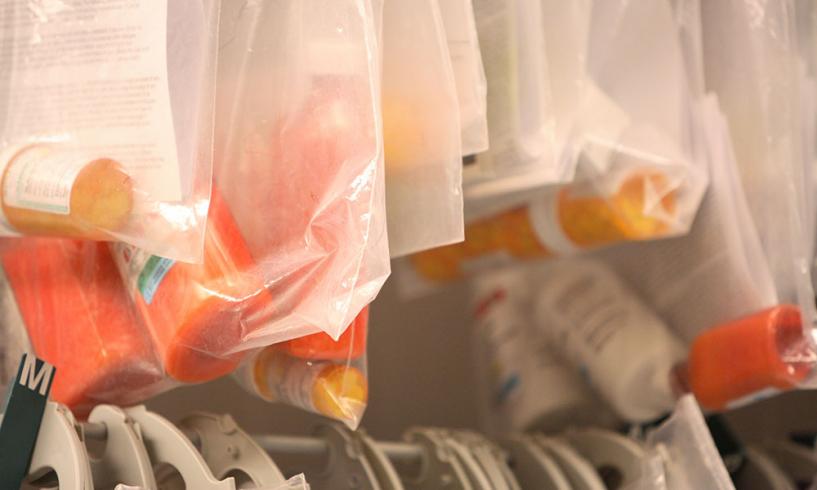Infused cancer drugs that are dosed according to patient weight are often available only in single-size vials. Many patients need only part of a second or third vial, and the remaining drug must be discarded. According to researchers, for the top 20 infused cancer drugs in the United States, this amounts to throwing away $1.8 billion in wasted medication. The analysis was published in the March 2016 issue of BMJ.
The researchers based their analysis on projected 2016 sales for the top 20 cancer drugs dosed by body size and packaged in single-dose vials. They used the most efficient combinations of available vial sizes to achieve the lowest U.S. Food and Drug Administration-approved dose in a sample representative of the U.S. population of patients with cancer. Although the proportion of leftover drug varied from 1%–33% based on the specific drug, they found that it averaged 10%, or $1.8 billion based on projected sales amounts.
They cited pembrolizumab as an example, which initially was offered in 50 mg vials that were later replaced with 100 mg vials. A 70 kg patient would require a dose of 140 mg, which resulted in only 10 mg of wasted drug with three 50 mg vials but is now 60 mg of wasted drug with two 100 mg vials. In this example, the cost of the discarded drug increased from $500 to $3,000 for a single dose.
The authors called for U.S. policy makers to develop approaches that would encourage pharmaceutical companies to offer more vial sizes to minimize discarded amounts, such as reducing or eliminating paying for leftover drug amounts. They also identified the need for more consistent guidance on vial sharing; currently, the Centers for Medicare and Medicaid Services permits it if requirements are followed but the Centers for Disease Control and Prevention discourages it because of safety concerns.
For more information, including an interactive application that outlines the cost of wasted amounts of each of the 20 cancer drugs, refer to the article.






